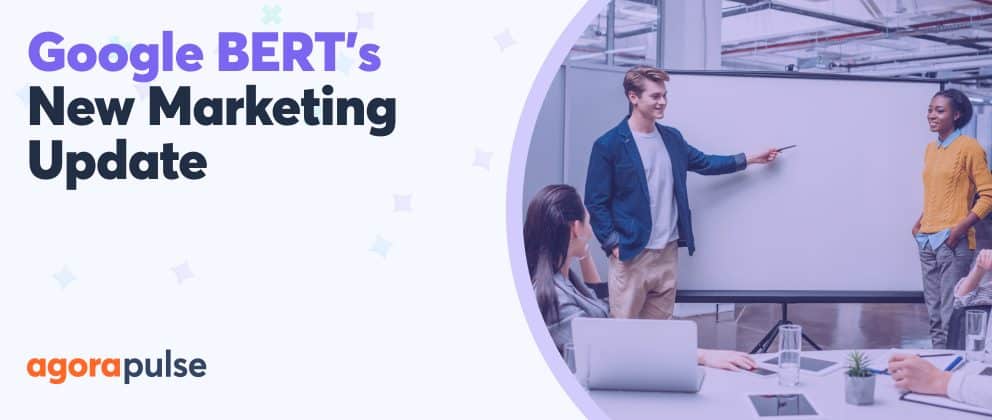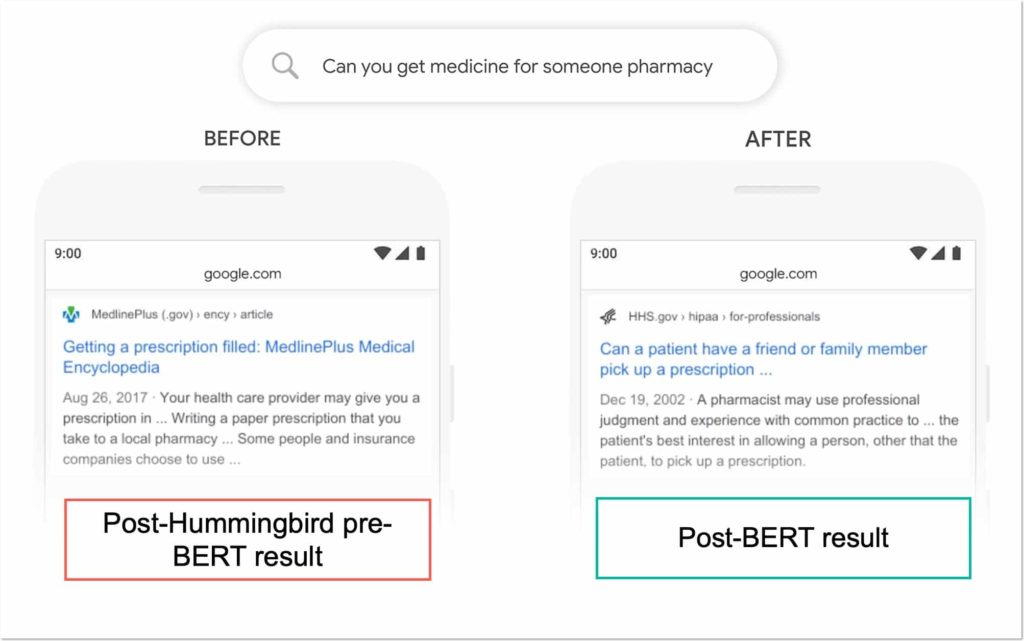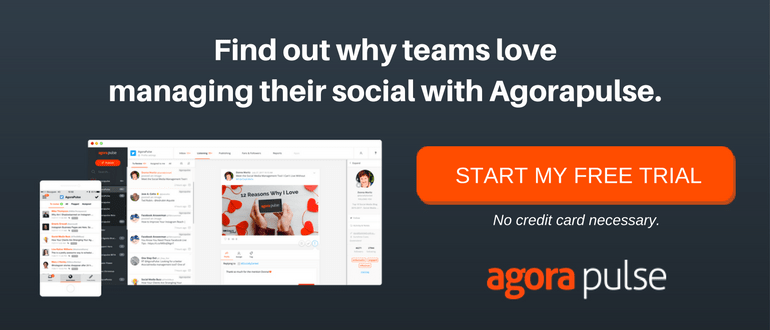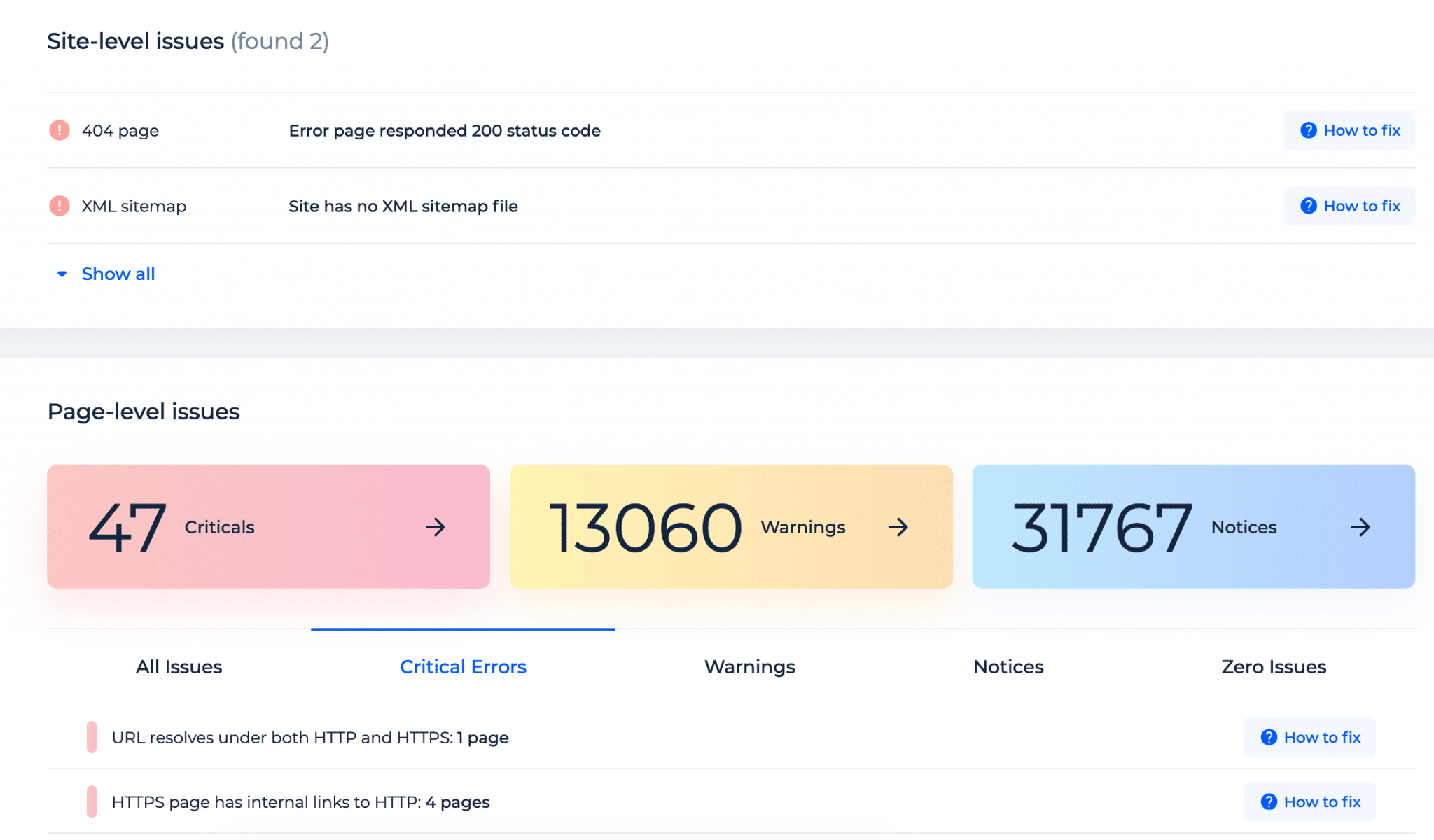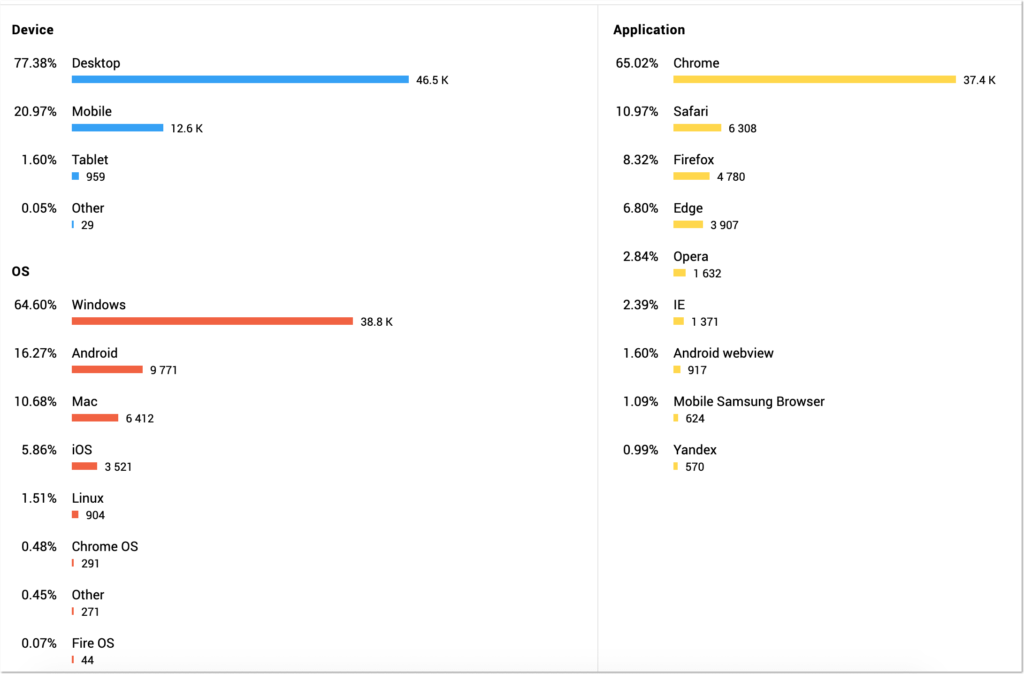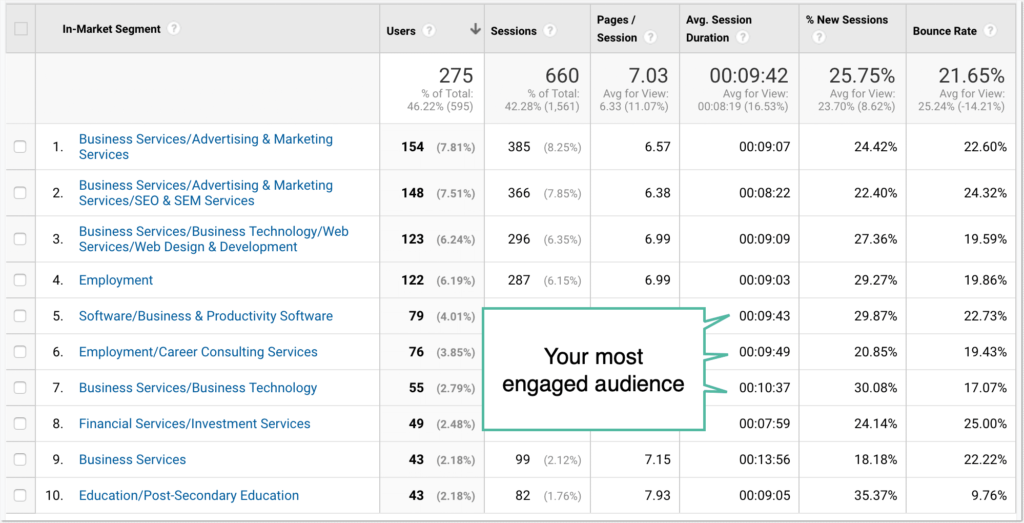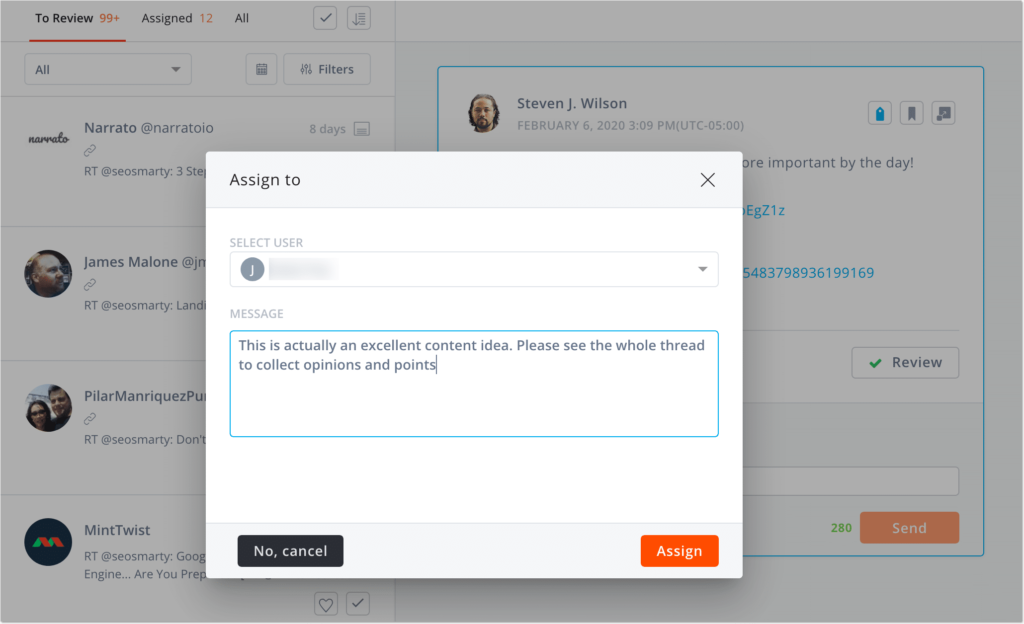The search algorithm update BERT helps Google better understand natural language for search results. So, what does this mean to marketers?
Thanks to modern technology, today’s consumers like to speak their questions directly into a device, making it hard for Google to interpret a more spontaneous spoken query.
This is why Google has been constantly working on improving its understanding of natural language as a whole and voice search queries in particular.
Two major Google updates so far are aimed at improving Google’s natural language processing algorithm:
- Hummingbird Update (and RankBrain)
- BERT Update
Hummingbird Update was announced back in 2013. It was Google’s earlier attempt to understand words in context rather than matching a query to web pages verbatim.
With Hummingbird, the digital marketing community was introduced to a new concept, i.e. “things-not-strings” which means that now Google is using its existing and ever-growing knowledge graph (i.e., Google’s database of facts) and the semantic analysis to see more than a string of words but also the context and the intent behind each query.
Almost together with Hummingbird, Google also announced RankBrain, an Artificial Intelligence system helping Google to process and understand search queries better. RankBrain was announced as something helping Hummingbird algorithm do a better job.
But there wasn’t much revealed beyond that.
What to Know About the BERT Update
BERT Update was announced in 2019 as Google attempt to better understand a search query as a whole. Though it sounds confusingly similar to “things, not strings” concept, the BERT update came five years later.
BERT is a leap forward in the same direction.
This example does a good job showing the difference: While post-Hummingbird did a good job capturing the context, post-BERT algorithm (empowered by five years of machine learning) interpreted the query itself better:
Put simply, both the algorithms do have much in common but BERT is much more advanced, especially for “longer, more conversational queries,” those that can be interpreted in many different ways, especially if you are a robot with no sense of humor.
Can You Optimize for BERT and Hummingbird?
There’s no optimization possible here because both of these updates were aiming at Google’s understanding of search queries better.
By default, a human being doesn’t need to do anything extra here as a human brain was already interpreting those search queries well enough.
It’s the machine that struggled.
If anything, algorithm updates like these should make our lives easier because presumably digital marketers wouldn’t need to do anything special to convey the meaning of the page to Google.
Well, we are not exactly there yet but those updates are making this day closer.
That’s also the reason why not many people saw any impact of either of these updates. Hummingbird had been running months before it was announced, and no one noticed. And BERT’s impact has been quite mild as well, as perceived by the web publishers.
Actually, BERT makes optimization easier because you no longer need to stress about exact-match keyword forced in your content. Similarly, BERT shifts focus from optimization to branding. For example, you no longer need to invest into an expensive keyword-driven domains. Instead, you can come up with creative brand-driven domain names.
So, What to Do Then?
Both of these updates do not require any tactical optimization changes—true.
But they should convince any digital marketer of the need to embrace customer-centric content marketing model.
Customer-centric content marketing
The customer-centric content strategy puts your target audience as the primary focus.
Too many digital brands are targeting “search engines” (organic rankings) and “buzz” (going viral) rather than their actual customers.
Besides, customer-centric content strategy entails using customer research tools and methods most traditional content strategies lack.
Specifically, a customer-centric content strategy involves user experience optimization, persona building, personalization, sales pipeline testing and intent optimization.
There are various AI SEO tools to help, including:
Site Checker (User experience optimization)
Site Checker creates a thorough audit alerting you of any user experience issues for you to optimize your content for all kinds of user:
Google Analytics and Finteza (persona building)
Finteza offers an indepth demographics reports showing your site users’ locations, devices, applications, and the organizations:
This gives you lots of information for persona building and even allows to estimate your audience average income and age.
Google Analytics Demographics and “Interests” feature allow you to better understand your current audience and create content catering to each segment/persona.
You can also add these reports to your WordPress dashboard making it easier for your authors to target the right demographics.
Text Optimizer (Intent Optimization)
Finally, knowing which intent your content serves best gives you a great idea of whether you have worded and structured it well. Text Optimizer is the fastest way to get a quick idea as to your content targets the right intent:
For clearer understanding what keyword intent is and why it is important, here’s a great explanation from Lior Krolewicz of Yael Consulting.
Embrace social listening
Finally, both BERT and Google Hummingbird manifested one obvious trend: the move to conversational marketing.
People interact with their devices differently these days … They talk to them asking questions or requesting feedback. So Google’s moves aim at understanding and interpreting these “conversations” are helpful.
Your overall digital strategy should do the same. It should explore how people talk in your niche. Your brand and your target customer need to speak the same language.
Social media listening is the closest we can get to a real conversation that could be archived and acted upon.
Agorapulse offers powerful social monitoring tools enabling you to listen to niche conversations, engage them, and even delegate any to other team members for them to act upon in content planning:
In Conclusion
Hummingbird and BERT are two of many Google’s attempts to better meet the needs of a smarter consumer who uses devices in a new way as part of routine conversation. Though there are no specific optimization tactics to add to optimize for either of these updates, following Google’s lead is a good idea. Embrace the same approach—a customer-centric conversation-focused marketing strategy that puts a customer in the center and seeks to better understand and meet their needs.
Sign up now for a FREE demo.
